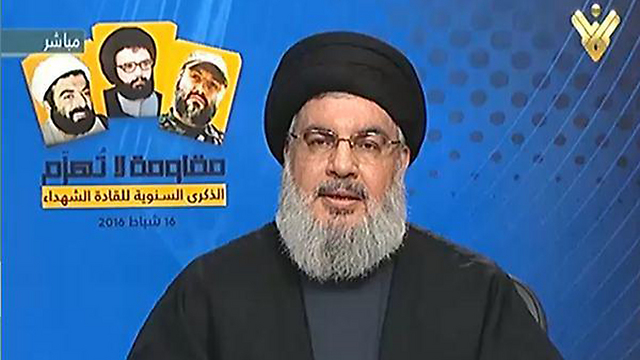Analysis: In the Third Lebanon War, Hezbollah will have 100,000 rockets at its disposal and special forces seeking to capture border towns; the IDF is preparing with advanced interceptors, border barriers, and deep intelligence.
The starting assumption is that Hezbollah currently has no interest in launching the Third Lebanon War. Its operations stretch from Yemen to Syria, where 7,000 of its fighters remain and where it lost 1,300 of them to the Syrian Civil War.
The organization may be gaining significant operational experience in all departments, but has still not changed its deployment of forces in preparation for conflict with the IDF – not even at a single post.

The threat from Hezbollah includes the ability to launch 100,000 rockets at Israel at a rate of 1,200 a day from batteries that are spread out and carefully hidden in dozens of villages in south Lebanon. The other step of which Nasrallah spoke was conquering the Galilee. He does not mean an operation involving divisions penetrating deep into Israeli territory, but rather taking over towns near the border fence – and there are plenty of these along the northern border.
Anyone who knows that front knows that the organization needs no tunnels in order to penetrate towns – and up until new deployments by the Northern Command, this could even be done with excessive ease. The IDF is ready with a three-pronged strategy: precise, broad, and disproportionate firepower; building a protective obstacle along the border, and rapid redeployment of all divisions to south Lebanon.
The Second Lebanon war that broke out in summer 2006 lasted for 33 days – much longer than what Israel will be able t endure under a barrage of rockets covering every spot in the country, and at a dizzying rate of fire. In order to deal with this threat, the aerial defense system has been upgraded with Iron Dome batteries, the David’s Sling system that is soon to become operational, and the Arrow system. In addition, a joint Israeli-US aerial defense drill is currently being conducted.
An especially important element in Israel’s capabilities is accurate intelligence regarding thousands of “quality” targets collected over the past decade, in comparison with only 200 targets possessed by the IDF when the Second Lebanon War began. Offensive capabilities have also been improved dramatically, and a senior IAF officer said that the new capabilities will permit the same attacks as in the Second Lebanon War min a short time and with much better results.
“It’s firepower that we never had before,” says the officer, “and in such a conflict where the home front will be attacked, all restrictions will be lifted. We will not call houses before we attack.” According to the officer, Hezbollah’s expansion makes it much more vulnerable and exposed new points of weakness. The chief of staff also says that Hezbollah will be surprised by the IDF’s intelligence capabilities.
The second important element is building a defensive line. No one who drives along the northern border can ignore the new line of cliffs which are carved out of the hills next to the border communities. This week ended with the third such project, where barriers were built across from the town of “Matat” –1,700 meters long and ten meters high – which is aimed at preventing infiltrations of Special Forces operatives from Hezbollah’s Radwan unit into the towns. The IDF is also building a series of additional lines of barriers across from other towns in order to defend them better.
The idea is that the attacking forces will be held up because of the barriers, which will enable the IDF to prepare and counterattack. According to threats made by Hezbollah, the terrorist organization will arrive at the towns with large forces with dozens of soldiers in each unit – which will detract from their stealth and their chances of success. The IDF believes that Hezbollah has no use for tunnels, both because of the difficult terrain and because of the short distance between the border and communities such as Shtula, Metulla, and Shlomi, all of which are just a couple hundred meters from the border.
The IDF’s third most important move is to strengthen its ground maneuverability – something which the IDF failed to do in the Second Lebanon War. The IDF’s ability to maneuver on the ground is not at the same level as its ability to collect intelligence or the level of the air force. Additionally, during the next round of violence in the north, the entire area will be a giant target for hundreds of rockets every day. Therefore, the IDF has developed a plan to evacuate the border communities during wartime.
As reported by The Times of Israel
